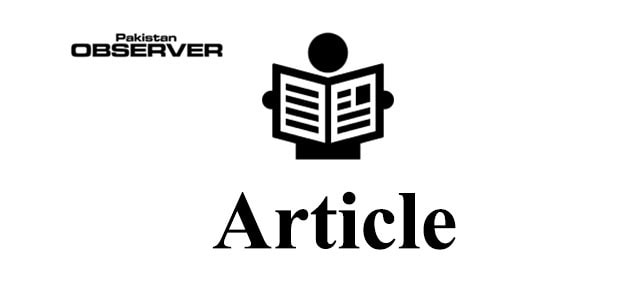HEC: Research woes in Pakistan
NEWS regarding research publications in clone journals have jolted the research environment across the globe.
Not only researchers are in danger, but also may their research endeavours go down the drain.
In Pakistan alone, over 150 research papers of about 400 researchers are reported to have been published in a clone journal since 2019.
The clone journals are those which mimic the details of journals, such as their International Standard Serial Number(ISSN) and title.
The question that deserves to be answered here is: who is at fault? This is really a serious concern to be looked into.
However, securing an appropriate rejoinder to the question needs to evaluate the whole process from the outset; this might bring more causes to light.
Let’s start. In Pakistan, the Higher Education Commission (HEC) designs policies regarding how and where a person should publish their papers.
Following those policies, all the academics start publishing their papers. But prior to publication phase, the process of submitting the papers to appropriate journals is quite a hard nut.
To make it stress-free for researchers, the Higher Education Commission has evolved an online HEC Journal Recognition System (HJRS) where all the HEC recognized journals are available online.
On the HJRS, all those recognized journals have been placed subject-wise, category-wise, and area-wise.
After writing new research papers, people look there for the relevant journals to target for their paper submission.
After targeting a journal, they need to identify the journal’s details, such as ISSN, publisher name, and country name.
These credentials help people to reach the looked-for journal at its particular place.
On the HJRS, two internationally recognized indexing and abstract global agencies(Scopus and Web of Science) are given to find the target journal over there, and those databases direct people to the authentic websites of their target journals.
On the Scopus, journals’ ‘source homepage’ link is given there that takes researchers to their original and authentic websites, but some journals’ ‘source homepage’ is not given that’s why researchers fall prey to clone (fake) journals.
Fixing this problem is possible if the journals’ link option is given there. Because this is the first successful attempt to find true journals, clicking their ‘source homepage’ button.
On the other hand, the Web of Science (WoS) agency is also treated like this to get help.
But the problem has now stood insoluble right after these global agencies have turned dubious; they have started misguiding people.
I have inquired from these global agencies about journals with duplicate credentials to verify their authentic version but have received unsatisfactory answers from them.
These things altogether come to confuse scholars to get on the receiving end. This problem can only be fixed if the scholars are taught technically how to identify if a journal is authentic.
In my reckoning, one must identify a journal’s members if they are true. Because a fake journal might have the counterfeit profiles of its editorial board members.
Also, the websites of duplicate journals must be compared and then should be born out from the aforesaid global agencies – but again these global agencies must be kept in mind asdubiousin certain cases.
This question still remains open to get answered; what to do if these global agencies have started misdirecting people to bogus journals?
The HEC must put a link of each and every journal at the bottom of its HJRS portal so that researchers may truly be directed towards the sought-after journal.
But it itself bears some technical flaws; above global agencies and the HJRS show different publishing countries of some journals – it is really an inexplicable part for scholars.
Many journals which the HJRS shows appear nowhere, and some journals’ websites do not function.
For some journals, it shows only one ISSN (print or electronic) that leaves researchers in the sheer lurch.
Because, generally, a journal has two ISSNs in two different versions i.e. print and electronic. That’s why it is a mind-boggling conundrum.
The question with reference to the HJRS’s technical flaws is: why this HJRS is riskily fettered with such issues?
Some believe it is managed by non-academics, and some believe it is run by academics but they have started minting money and have made it a business-oriented platform.
This is really a serious concern to be fixed as soon as possible.
Pakistani academics can only be saved from being fallen prey to clone and fake journals when the HJRS itself starts working in the hands of professional research scholars.
Each and every journal’s homepage link must be provided at the bottom of the HJRS portal so that the scholars can truly be headed for the true websites of the recognized journals from across the globe.
Apart from this, the HJRS team must produce the subject-wise list of journals which have been mimicked deceitfully, identifying their original and fake websites. And this part should be posted on the HJRS portal.
—The writer is the member of the editorial board for a Russian research journal, Bulletin of Science and Practice.










